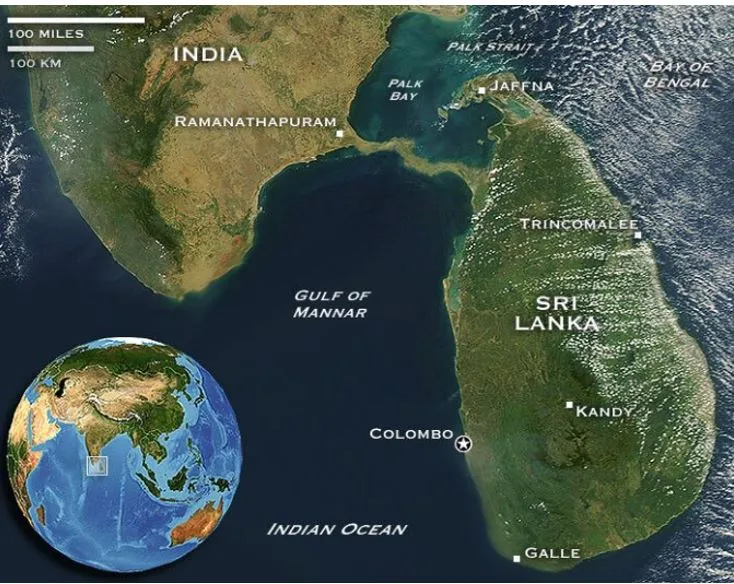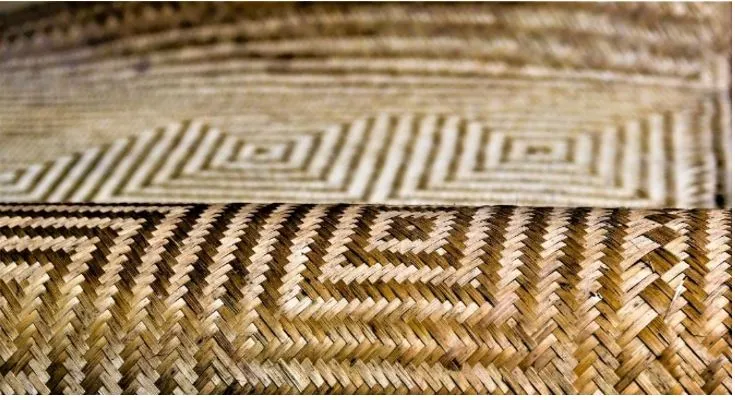

7th April 2025 (16 Topics)
Mains Issues
Context
Prime Minister Narendra Modi participated in the 6th BIMSTEC (Bay of Bengal Initiative for Multi-Sectoral Technical and Economic Cooperation) Summit hosted by Thailand, the current chair. The theme of the Summit was - "BIMSTEC: Prosperous, Resilient and Open.”
Key-highlights of the Summit
- Prime Minister Modi announced several India-led initiatives towards institution and capacity building in BIMSTEC:
- Centre of Excellence: BIMSTEC Centres of Excellence in India on Disaster Management, Sustainable Maritime Transport, Traditional Medicine, and Research and Training in Agriculture.
- BODHI (BIMSTEC for Organized Development of Human Resource Infrastructure): It is a new programme for skilling the youth. Under this programme, training and scholarships would be provided to professionals, students, researchers, diplomats and others.
- BIMSTEC Chamber of Commerce: For greater regional economic integration, PM offered to establish BIMSTEC Chamber of Commerce and to organize BIMSTEC Business Summit every year in India.
- UPI: He also proposed establishing connectivity between India’s Unified Payments Interface (UPI) and the payment systems of BIMSTEC member states.
- The Summit adopted the following:
- Summit Declaration
- BIMSTEC Bangkok Vision 2030 document, which lays out the road map for the collective prosperity of the region.
- Signing of the BIMSTEC Maritime Transport Agreement, which provides for – National Treatment and assistance to vessels, crew and cargo; mutual recognition of certificates/ documents; Joint Shipping Coordination Committee; and dispute settlement mechanism.
- Report of the BIMSTEC Eminent Persons Group constituted to make recommendations for future direction for the BIMSTEC.
What is the significance of BIMSTEC?
- BIMSTEC provides a common platform for countries in South Asia and Southeast Asia at a time when the SAARC is more or less defunct. While the Association of Southeast Asian Nations (ASEAN) is seen as one of more cohesive groupings in the world, the lack of forward movement in the fraught India-Pakistan relationship has left few options for South Asian countries.
- Landlocked countries, Nepal and Bhutan, may also benefit from access to the Bay of Bengal as a result of better ties with BIMSTEC countries.
- BIMSTEC could allow India to push a constructive agenda to counter Chinese investments, and the Bay of Bengal can be showcased as open and peaceful, contrasting with China’s behaviour in the South China Sea.
How India is rewriting South Asia's regional diplomacy through BIMSTEC?
- Moving Beyond SAARC: India’s increasing focus on BIMSTEC reflects its conscious move away from the SAARC framework, which has long been hindered by political tensions—particularly with Pakistan.
- Anchoring BIMSTEC in India’s Core Foreign Policy: BIMSTEC now lies at the intersection of India’s Neighbourhood First and Act East policies—making it central to India’s regional and trans-regional outreach. The group connects South Asia with Southeast Asia, offering a platform to expand India’s influence eastwards while reinforcing neighbourhood ties.
- PM Modi’s articulation of BIMSTEC as a “natural platform” bridging the two regions aligns with India’s maritime vision under the SAGAR (Security and Growth for All in the Region) doctrine, placing the Bay of Bengal at the heart of strategic cooperation.
- BIMSTEC Vision 2030: India played a central role in adopting the Bangkok Vision 2030, which envisions BIMSTEC as a region of prosperity, security, and inclusivity. This long-term blueprint reflects India’s commitment to shaping a rules-based, development-focused regional order that prioritises collective progress over bilateral frictions.
Fact Box: BIMSTEC
|
PYQQ. Do you think that BIMSTEC is a parallel organisation like the SAARC? What are the similarities and dissimilarities between the two? How are Indian foreign policy objectives realized by forming this new organisation? (2022) |


Mains Issues
Context
US President Donald Trump declared April 2 as “Liberation Day” and announced sweeping tariffs under a new policy of “reciprocal tariffs”—a base tariff of 10% on all imports and country-specific additional tariffs based on what the US perceives as unfair trade practices. This move is driven by the US’s longstanding trade deficit—about USD 1.2 trillion.
Why is this significant?
|
Country-wise Tariff Snapshot |
||
|
Country |
Tariff Imposed |
Share in US Trade Deficit |
|
Cambodia |
39% |
1% |
|
Bangladesh |
37% |
<0.5% |
|
China |
34% |
25% |
|
EU |
20% |
20% |
|
India |
26% |
Moderate |
|
UK, Brazil |
10–20% |
US enjoys trade surplus |
- This marks one of the most aggressive shifts toward protectionism since the Great Depression-era Smoot-Hawley Tariff Act.
- It challenges the foundations of multilateral trade, especially under the World Trade Organization (WTO), and signals a “go-it-alone” approach in US trade policy.
Impact on India
- The United States (US) is the top destination for India’s exports, accounting for 18% of the total cargo shipped.
- Electric machinery and equipment goods, including mobile phones, are the top exports from India, followed by pearls, gems and jewellery, pharmaceutical products, nuclear reactors and equipment, and petroleum products.
- Impact on Key Sectors
- Electronics and Mobile Phones: India’s mobile phone exports, particularly due to the assembly of iPhones, have grown steadily and now stand at around $6 billion. However, many of the components used are imported from tariff-hit countries like China and Taiwan. This could affect margins and growth.
- On the positive side, the higher tariffs imposed on Vietnam and Thailand may open a window for India to attract more electronics manufacturing investment.
- Gems and Jewellery: This sector forms about 13% of India’s total exports to the US. It is expected to be among the most affected due to the direct impact of the 27% tariff. The industry may need to focus more on value addition and product differentiation to stay competitive in the US market.
- Textiles and Apparel: This is an area where India could benefit. Countries like Bangladesh, Vietnam, and Sri Lanka — all major competitors — now face higher tariffs. This could provide an opportunity for Indian exporters to gain market share, provided they focus on improving quality, scale, and timely delivery.
- Pharmaceuticals: At present, pharmaceutical products have been exempted from the new tariffs. India is one of the largest suppliers of generic medicines to the US, and this exemption is a relief for the sector. However, experts caution that sector-specific tariffs could still be introduced in the future.
- Auto Parts, Steel, and Aluminium: These products will face a 25% tariff. This will affect several Indian manufacturers, though those with production facilities in countries like Mexico — which enjoys a free trade agreement with the US — may be better positioned to manage the impact.
Economic Issues
- Higher Prices and Inflation in the US: Tariffs mean higher import prices. Unless the US dollar strengthens sharply, consumers will bear the cost, leading to inflation.
- Slower Global Growth: Tariffs act like friction in trade. They reduce volume, distort supply chains, and dampen investor sentiment.
- Retaliation Risks: If affected countries impose counter-tariffs, a full-blown trade war could erupt, further hurting global economic prospects.
- Stagflation in the US: The worst-case scenario is stagflation—rising prices (inflation) combined with stagnant growth. This is politically and economically damaging.
About
|


Prelims Articles
Context
Kancha Gachibowli, a 400-acre parcel of land, is once again at the heart of a controversy in Telangana’s capital Hyderabad.
About Kancha Gachibowli
- Kancha Gachibowli is home to over 700 plant species, including thousands of trees and shrubs that act as the city's green lungs.
- The land is undisturbed for over 20 years, developing into a rich natural habitat. It hosts:
- 237 bird species – more than Kasu Brahmananda Reddy (KBR) and Mrugavani National Parks.
- Murricia hyderabadensis – a unique, endemic spider species found only here.
- Wild animals such as spotted deer, wild boars, Indian star tortoises, monitor lizards, and snakes like the Indian rock python.
- 27 bird species under Schedule-I of the Wildlife Protection Act, 1972.
- 3 reptile species and 72 species of trees.
- The area also features two lakes—Peacock Lake and Buffalo Lake.
- Kancha Gachibowli falls under the western part of Hyderabad, an area well-known owing to the presence of the city’s financial district, a concrete jungle with little green space left.

Historical & Legal Background:
|


Prelims Articles
Context
As PM Modi inaugurated Pamban Bridge in Tamil Nadu, attention also turns to the nearby Ram Setu.
About
- Ram Setu, also known as the Adams Bridge, is a chain of shoals linking India and Sri Lanka.
- It connects Rameswaram to the Mannar island of Sri Lanka
- The bridge is a 48 km long chain of natural limestone shoals.
- It separates the Gulf of Mannar (south), an inlet of the Indian Ocean, from the Palk Strait (north), an inlet of the Bay of Bengal.
- The structure is a natural formation and that the bridge is a large tombolo, which is a coastal formation of sandbars that connects an island across the sea to the mainland.
- Ram Sethu was completely above sea level till 1480. It was submerged in the shallow sea due to natural calamities.
- Mythology:Ram Setu is mentioned in the epic Ramayana, as the bridge constructed by Lord Rama and his vanara (monkey) army.
- The bridge was constructed to cross over to Lanka to rescue Goddess Sita from the clutches of the demon king Ravana.
- In Valmiki’s Ramayana, the bridge is described as Sethubanthan.



Prelims Articles
Context
In a major stride towards conserving India’s rich tapestry of traditional knowledge and local expertise, two culturally significant products—Kannadippaya, a tribal handicraft from Kerala, and the Warangal Chapata chilli, a distinctive variety of chilli from Telangana—have recently been granted the Geographical Indication (GI) tag.
About Kannadippaya
- Kannadippaya, literally translating to “mirror mat”, derives its name from the distinct reflective patterns woven into its surface.
- It is crafted using the inner layers of reed bamboo.
- The mat is known for its thermo-regulating properties, offering warmth during colder months and a cooling effect in the summer.
- The use of species such as Teinostachyum wightii and Ochlandra spp., highlights the community’s intimate ecological knowledge and sustainable harvesting practices.
- Custodians of Tradition: The craft is preserved and practiced by a number of tribal communities, including the Oorali, Mannan, Muthuva, Malayan, and Kadar, as well as the Ulladan, Malayarayan, and Hill Pulaya
- Traditionally, Kannadippaya held ceremonial significance and was once offered to royalty as a token of respect and esteem.

About Warangal Chapata Chilli
- Warangal Chapata Chilli, also known locally as the Tomato Chilli, is a traditional variety of chilli cultivated primarily in the Warangal region of Telangana, India.
- It is known for its distinct tomato-like shape and bright red colour, which gives it its popular name.
- It is mildly pungent, less spicy than many other Indian chillies—but rich in flavour.
- It is high in capsicum oleoresin, which is a natural extract used in the food industry for adding colour and spice.
- Types (three fruit types): Single Patti, Double Patti and Odalu
- It is well-suited to the dry, red soil regions of northern Telangana.

Geographical Indication (GI tag)
|
PYQQ. Which of the following has/have been accorded ‘Geographical Indication’ status? (2015)
Select the correct answer using the code given below:
Solution: (c) Q. India enacted the Geographical Indications of Goods (Registration and Protection) Act, 1999 in order to comply with the obligations to (2018)
Solution: (d) |


Prelims Articles
Context
The government launched the “NITI NCAER States Economic Forum” portal.
About
- The portal is a comprehensive repository of data on social, economic and fiscal parameters, research reports, papers, and expert commentary on State Finances for a period of about 30 years (i.e 1990-91 to 2022-23).
- It has been developed by NITI Aayog, in collaboration with the National Council of Applied Economic Research (NCAER).
- Components: The forum consists of four primary components:
- State reports, which offer in-depth analysis of various fiscal and economic indicators at the state level
- Data repository, a consolidated database of social, economic, and financial parameters providing historical trends and patterns
- State fiscal and economic dashboard, a visual and analytical representation of state finances to allow easy comparisons and insights
- Research and commentaries, featuring expert insights, academic research, and policy discussions focused on state-level economic and fiscal issues.
- Significance:
- NITI NCAER States Economic Forum will be beneficial in the availability of authentic data.
- The portal will help States to make more meaningful interventions, raising revenues, managing debts and learning from peer experiences.


Prelims Articles
Context
Kerala, Tamil Nadu, and West Bengal have received zero funds from the Centre’s share under the Ministry of Education’s flagship Samagra Shiksha scheme (SSA) for the financial year 2024-25.
What is Samagra Shiksha Abhiyan (SSA)?
- Launched in: 2018
- Samagra Shiksha Abhiyan (SSA) is a flagship programme aimed at transforming the school education landscape across the country.
- It integrates three previously existing schemes into a single comprehensive initiative.
- Sarva Shiksha Abhiyan (SSA)
- Rashtriya Madhyamik Shiksha Abhiyan (RMSA)
- Teacher Education (TE)
- The programme covers the entire educational spectrum from pre-school to class 12, making it a holistic approach to school education.
- The primary objective of SSA is to ensure inclusive and equitable quality education and promote lifelong learning opportunities for all children.
- The scheme also prioritizes quality improvement through teacher training, better infrastructure, integration of digital technologyin classrooms and the introduction of vocational education at school secondary level.
- By promoting a well-rounded educational approach, SSA aims to equip students with the necessary skills and knowledge to succeed in a rapidly evolving world.
- The scheme is in accordance with Sustainable Development Goal for Education (SDG-4).
- Goal SDG-4.1 states that “By 2030, ensure that all boys and girls complete free, equitable and quality primary and secondary education leading to relevant and effective learning outcomes".
- Goal SDG 4.5states that “By 2030, eliminate gender disparities in education and ensure equal access to all levels of Education and vocational training for the vulnerable, including persons with disabilities, indigenous peoples and children in vulnerable situations”


Prelims Articles
Context
Prime Minister Narendra Modi inaugurated the New Pamban Bridge, India’s first vertical sea-lift railway bridge, built at a cost of over Rs 550 crore. It is seen as a major engineering achievement and will boost rail connectivity to Rameswaram, a major pilgrimage town.
About the Pamban Bridge
- The bridge connects Mandapam (mainland Tamil Nadu) to Rameswaram Island across the Palk Strait, in southern Tamil Nadu.
- Purpose: It enables train movement to Rameswaram and allows ships to pass underneath via a lift mechanism.
- Length: 2.08 km long.
- Design Features:
- 99 fixed spans and one 72.5-metre vertical lift span (can be raised up to 17 metres).
- The lift span allows large ships to pass without disturbing rail traffic.
- Speed & Safety:
- Trains can run safely at 80 kmph (designed for up to 160 kmph).
- Lifespan: It is designed for 100 years of operation.
- It is built to withstand wind speeds up to 230 kmph and seismic activity.
- Durability Enhancements:
- Stainless steel reinforcement and fully welded joints.
- Polysiloxane paint used to resist corrosion from marine conditions.
- 333 piles and 101 piers support the foundation.
- Robust surface protection system offers a lifespan of up to 58 years with minimal maintenance.
- The Pamban Bridge is being compared to famous ones like the Golden Gate Bridge in the USA, Tower Bridge in the UK, and the Oresund Bridge between Denmark and Sweden because of its modern design and technology.
- The old Pamban Bridge was built in 1914 by British engineers. It used a manually operated Scherzer's span (a type of rolling lift bridge). The pass over was shut to rail traffic due to safety concerns.



Prelims Articles
Context
A recent study published in Cell has documented how chimpanzees in West Africa use unique mating dialects — a form of cultural behaviour — and how human impacts are causing the loss of these dialects. This raises a broader question about conservation of animal cultures, not just species.
Key Findings from the Study
- Chimpanzees exhibit culture through learned and shared traditions, like humans.
- Scientists identified four distinct ‘dialects’ used by male chimpanzees to signal mating interest:
- Heel-kick (stomping to make noise)
- Knuckle-knock (soft tapping on surfaces)
- Leaf-clip (ripping leaves to produce sound)
- Branch-shake (vigorous shaking of branches)
- These gestures are community-specific and learned, not genetically inherited.
- Demographic collapse (loss of adult males in some groups) led to the loss of specific dialects (e.g., knuckle-knock in the North group).
- Even after the population recovered, the lost dialect didn’t return — suggesting cultural knowledge was not passed on.
About the Species
|


Prelims Articles
Context
India's Chandrayaan-3 mission successfully deployed ChaSTE (Chandra’s Surface Thermophysical Experiment) near the Moon's south pole in 2023. ChaSTE became the first instrument to measure in-situ temperatures beneath the lunar surface in this region, helping confirm the presence of water ice.
What is ChaSTE?
- ChaSTE is a scientific instrument onboard Chandrayaan-3's Vikram lander.
- It is designed to measure thermal properties (like temperature gradients) of the lunar soil. It focused on subsurface temperature up to a depth of 10 cm.
- The instrument was designed by the Physical Research Lab and the Space Physics Lab.
- How it works?
- It uses a rotating mechanism (not hammering) to gently push the probe into the lunar soil.
- It contains 10 temperature sensors, each spaced ~1 cm apart.
- It measures resistance during insertion and temperature at different depths.
- Significance:
- First-ever successful deployment of a thermal probe into the soil of any celestial body.
- Provided critical data about thermal conductivity and water ice presence near the south pole.
- Outperformed previous international missions that failed to gather similar data:
- ESA’s MUPUS (2014) on Comet 67P (failed due to faulty landing).
- NASA’s HP3 “Mole” (2018) on Mars (failed to dig and collect data).
Lunar regolith
|


Prelims Articles
Context
A recent study demonstrated a new method of producing "audible enclaves" — focused sound zones audible only at specific points, using intersecting ultrasonic beams.
What is an Audible Enclave?
- An audible enclave is a small, confined zone in space where sound is clearly audible to a person within it — but completely undetectable to those outside.
- The sound is audible only to people inside that specific area, while remaining inaudible to others around.
- Technology used:
- Sound is a wave, it moves through a medium (like air) by vibrating the particles back and forth.
- The audible enclave technology is based on non-linear acoustics and sound wave modulation.
- It uses two high-frequency (ultrasonic) sound waves of different frequencies. These waves are inaudible individually.
- When they intersect, they create an audible sound at that point through non-linear interaction.
- The sound is confined to a narrow area — the audible enclave.


Prelims Articles
Context
A recent global phase 3 trial (SOUL trial) showed that oral semaglutide — a drug for type 2 diabetes — reduced the risk of heart attacks, strokes, and cardiovascular deaths by 14%, highlighting the need for cardio-renal protection in diabetes management.
What is Semaglutide?
- Semaglutide is a GLP-1 receptor agonist (GLP-1RA) used to:
- Treat type 2 diabetes
- Manage long-term weight loss in people with obesity or related conditions
- It was approved in India in June 2021 for weight management alongside diet and exercise.
- Semaglutide addresses both diabetes and cardiovascular risk — tackling India’s dual burden of diabetes and CVD.
Fact Box: About Diabetes
|


Prelims Articles
Context
Indian astronaut Shubhanshu Shukla, a seasoned Indian Air Force test pilot, is set to make history as the first Indian to travel to the International Space Station (ISS) as part of the Axiom Mission 4 (Ax-4) in May this year.
About Axiom Mission 4 (Ax-4)
- Axiom Mission 4 (Ax-4) is a private astronaut mission organized by Axiom Space in collaboration with NASA and SpaceX.
- The mission is designed to carry international astronauts to the International Space Station (ISS) aboard a SpaceX Crew Dragon spacecraft, launched from NASA’s Kennedy Space Center, Florida.
- The Ax-4 mission will be the most research-intensive Axiom mission to date, conducting around 60 scientific studies from 31 countries, covering biology, human physiology, materials science, and educational outreach.
- Mission Highlights:
- Spacecraft: SpaceX Crew Dragon.
- Launch Vehicle: Falcon 9 rocket.
- Crew Composition:
- Commander: Peggy Whitson (former NASA astronaut).
- Pilot: Shubhanshu Shukla (India) – First Indian to travel to ISS.
- Mission Specialists: Astronauts from Hungary and Poland.
- ISRO’s Role & Experiments: ISRO is sending six experiments aboard this mission, aimed at advancing space biology, biotechnology, and human spaceflight preparedness. These include:
- Voyager Displays – Understanding cognitive and visual performance in microgravity using screens.
- Voyager Tardigrades – Studying survival mechanisms of tardigrades (microscopic animals) to unlock genes linked to resilience in space.
- Crop Seeds on ISS – Analyzing spaceflight's impact on six crop varieties for future space farming.
- Cyanobacteria Growth Study – Investigating their role in life-support systems and oxygen generation.
- Myogenesis Study – Exploring muscle loss and potential therapies for astronauts and Earth-based muscle diseases.
- STEMonstrations & Sprouts – Promoting student engagement in space research and studying plant growth in space.

Fact Box: International Space Station
|


Editorials
Context
India is facing an alarming burden of non-communicable diseases (NCDs). Despite India's ambitions of becoming a USD 5 trillion economy, the country is grappling with a “silent epidemic” of NCDs, threatening not just public health but also national productivity and economic growth.
The Economic and Epidemiological Shift
- Epidemiological Transition in India: India has shifted from communicable to non-communicable diseases, with NCDs now accounting for over 66% of total deaths, including heart disease, cancer, stroke, and diabetes.
- Impact on Working-Age Population: Over 22% of Indians above age 30 face the risk of premature death from NCDs, compromising India’s demographic dividend and productivity.
- Macroeconomic Burden of NCDs: NCDs are projected to cost India USD 3.5–USD 4 trillion between 2012 and 2030, amounting to an annual GDP loss of 5–10%, making prevention a macroeconomic priority.
Lifestyle, Environment & Prevention Strategies
- Lifestyle-Driven Risk Factors: Sedentary habits, poor diet, obesity (affecting 22–23% of adults), and tobacco/alcohol use are key modifiable risk factors for 80% of heart disease, diabetes, and stroke cases.
- Environmental Health Risks: Air pollution contributes significantly to COPD, lung cancer, and heart attacks, making pollution control an integral part of public health policy.
- Role of Early Screening: Screening starting at age 40 or earlier can detect high-risk conditions like hypertension, cancers, or diabetes early, enabling timely intervention and reducing mortality.
Role of Technology, Governance & Societal Behaviour
- Digital and AI-Driven Preventive Models: With 750+ million smartphone users, India can leverage digital tools and AI-based predictive models to assess personal risk scores and detect disease early via radiological AI diagnostics.
- Behavioural and Institutional Shifts: A “preventive mindset” must be fostered at all levels — individuals, corporates (via wellness programs), and healthcare providers — shifting focus from reactive to proactive care.
- Government and Policy Initiatives: Government schemes like the National Programme for Prevention and Control of NCDs and Health and Wellness Centres promote screening; health-focused urban planning and food regulation are needed to institutionalise prevention.
Practice Question
Q. "The burden of non-communicable diseases in India is not just a public health crisis but a macroeconomic challenge." Critically examine in light of India’s economic ambitions. Suggest a multi-pronged preventive health-care strategy leveraging digital tools and governance reforms.


Editorials
Context
On World Health Day (April 7), attention has turned to the vital role of clean water and sanitation in ensuring a healthy society. India’s large-scale rural missions — particularly the Swachh Bharat Mission (SBM) and the Jal Jeevan Mission (JJM) — have emerged as transformative efforts to address long-standing public health challenges through infrastructure, behaviour change, and community-led solutions.
Transformative Impact of Rural Missions
- SBM’s Public Health Gains: Between 2014–2019, SBM averted over 3 lakh diarrhoeal deaths, with studies (Gates Foundation, UNICEF, WHO) linking toilet access to reduced child wasting, better safety for women (93% felt safer), and annual healthcare savings of ?50,000 per household.
- JJM’s Socio-Economic Returns: The Jal Jeevan Mission, launched in 2019, promises universal rural tap water, with WHO projections estimating 4 lakh diarrhoeal deaths averted and 36 lakh child lives saved annually; it also frees 5.5 crore woman-hours daily, boosting female labour force participation.
- Integrated Village-Level Interventions: Through Sujal and Swachh Gaon campaigns, convergence of WASH (Water, Sanitation, Hygiene) initiatives has led to improved infrastructure — 07 lakh villages with solid waste and 5.23 lakh with liquid waste management, advancing preventive health outcomes.
Health, Dignity and Gender Transformation
- Water and Sanitation as Health Shields: With 80% rural households now having tap water and 96% villages declared ODF Plus, basic services are acting as the first line of defence against disease, supporting child growth and protecting women from health and safety vulnerabilities.
- Women as Frontline Change-Makers: Over 48 million women have been trained to test water quality; women-led Self-Help Groups now manage sanitation infrastructure, run recycling units, and produce sanitary napkins — transforming beneficiaries into grassroots leaders.
- Sanitation Chain as a Health Ecosystem: Toilets, clean water, and waste management collectively improve public health, environmental safety, and school attendance — reinforcing that preventive care begins at home, not in hospitals.
Convergence, Global Relevance, and Policy Innovation
- Inter-Ministerial Convergence is Key: Health outcomes are deeply tied to policies in water, nutrition, education, and rural development, and India's success stems from a whole-of-government approach, driven by sustained political will and local ownership.
- Technology-Driven Models for Scale: Real-time dashboards, GOBARdhan biogas plants, and plastic waste management units have digitised and decentralised rural sanitation management, ensuring transparency, sustainability, and replicability.
- India as a Global WASH Model: India’s community-led and tech-integrated WASH models offer blueprints for the Global South, showing that every rupee spent in WASH multiplies into long-term gains in productivity, gender equity, public health, and environmental stability.
Practice Question
Q. “India’s rural sanitation and water supply missions are no longer just infrastructural interventions but health and development strategies.” Critically analyse the health, gender, and economic impact of SBM and JJM. What lessons do these programmes offer for other developing countries?


Editorials
Context
The Supreme Court of India recently formed a National Task Force to address the rising number of student suicides in higher education institutions, particularly IITs. This move follows multiple suicides at IIT Delhi in 2023 and reflects a larger concern over institutional failure in addressing discrimination, mental health, and support structures on campuses.
Systemic Gaps in Institutional Mental Health Response
- Over-Reliance on Individualised Solutions: Institutional responses often centre around hiring more psychologists, ignoring structural factors like caste, gender, and policy-induced discrimination. This narrow view fails to address the root causes of psychological distress in academic environments.
- Discriminatory Policies and Language: Most IIT counselling centres do not use queer-affirmative language or gender-inclusive pronouns, showing a lack of compliance with the Supreme Court's NALSA (2014) judgment and its 2023 Handbook on Combating Gender Stereotypes.
- Lack of Inclusive Frameworks: The absence of anti-discrimination policies and gender-diverse recognition in campus systems actively contributes to a hostile environment for marginalised students, exacerbating mental health vulnerabilities.
Role of Language, Culture, and Classroom Dynamics
- Language as Power and Inclusion: Inclusive language such as the use of preferred pronouns signals institutional fairness and identity safety. It affirms gender-diverse individuals and acts as a preventive public mental health intervention.
- Exclusion in Everyday Campus Culture: Statements like “teachers talk only about grades” reflect an academic culture that prioritises performance over human dignity and emotional well-being, undermining the ethic of care.
- Culturally Unsafe Attendance Policies: Arbitrary attendance rules further stress students already struggling, especially those facing discrimination. Teacher-student engagement must be reimagined as a space of empathy and relational learning.
Need for Paradigm Shift in Mental Health Policy
- Care Ethics Over Compliance Checklists: Current campus mental health efforts remain reactive and tokenistic. There is a pressing need to integrate care ethics into institutional design, curriculum, and policy.
- Psychologists Must Challenge Policy-Level Harms: It is a violation of public mental health ethics when mental health professionals conform to policies that perpetuate harm. They must advocate for structural reform, not just provide therapy.
- Bottom-Up Mental Health Strategy: True transformation requires a bottom-up approach rooted in classrooms and student life. This involves mapping contextual challenges and building safe, democratic academic spaces that prioritise mental wellness alongside intellectual growth.
Practice Question
Q. “The mental health crisis in Indian higher education institutions is rooted not just in individual distress but in systemic exclusion.” Critically analyse this statement in the light of recent judicial and policy interventions. Suggest reforms to create inclusive and empathetic campus environments.





